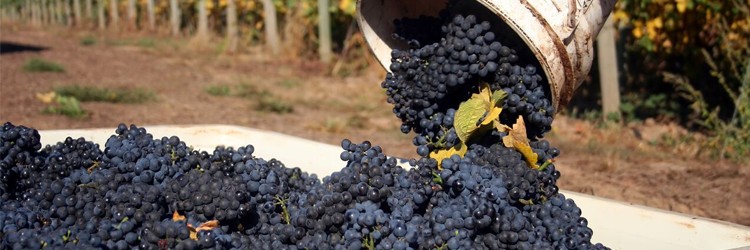Craft & Cork >> Winemaking

The inside scoop on grape skins
If you’ve ever peeled a red grape, you’ll have seen something interesting: the flesh is actually pale yellow–not red– and if you eat it separately from the skin it’s sweet, but actually kind of bland. That’s because all of the colour and tannin, and most of their flavour and aroma are stored in the skin (and the seeds) of the grape. If you press red grapes immediately after crushing, you get pale yellow juice. To make red wine you have to macerate (soak) the skins and the flesh together in order to get all of that colour/tannin/flavour/aroma in to the juice.

All wine kits are made from grapes (you can’t make them out of anything else!) and just like commercial red wine, the grapes are crushed and macerated, pressed, clarified, carefully balanced and blended, then packaged into that sturdy box that you pour neatly into your fermenter. With a few additions and a bit of stirring you’re on the path to bottling day.
Colour and Tannin
Despite our winemakers’ efforts to get the maximum extraction into wine kits, it’s difficult to get out 100% of the compounds from the skins and seeds. Some of the tannins, flavours and colours, including some desirable ones, are best extracted with an alcohol solution–like in regular commercial winemaking. That’s where GenuWine Winery Grape Skin packs come in. Adding GenuWine Winery Grape Skins to the must allows the alcohol fermentation to go that extra mile to get the good stuff out of the grapes and into your own craft wine.
 The Packs
The Packs
There are two main sorts of GenuWine Winery Grape Skins, dried and crushed. Each provides colour and tannin to the must for improved alcohol extraction. Both types of grape skin packs are processed to maximize the extractability of the material, and they break down to a point where even five or six days of fermentation will extract all of their goodness.
The GenuWine Winery Dried Grape Skins supply a high volume of skin and seed material for a given weight/volume of pack, while the GenuWine Winery Crushed Grape Skin packs use heavily processed skins suspended in heavy juice, looking a lot like jam.

Each approach has its merits: typically a finished 23 litre (5 gallon) batch of wine will take about 45 kilos (100 pounds) of grapes. If you’re trying to boost the alcohol-soluble tannins and colour in your finished wine you’ll want to maximise the amount of grape skin material. Dried skins do that by removing all of the extra water, and most of the stems and cellulose for a compact, tidy package.
Crushed grape packs typically come in a size that’s roughly 10-15% % of the total volume of the kit, packed in very high sugar solution of grape juice concentrate. Because crushed packs contain more pulp, cellulose and goo, they typically contain only a little more grapes than the dried packs, but they pack an even bigger punch.
The Finished Product
Whichever grape pack you choose, it will help you make a bigger, bolder wine that drinks well young in addition to aging to smooth perfection, adding smooth tannins, robust colour and rich aromas—GenuWine Winery Grape Skins really are the perfect addition to a great wine.


Comments are closed.